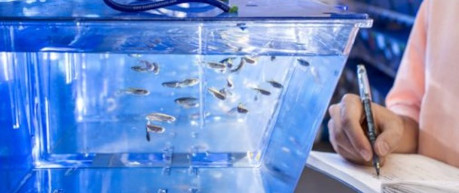Friday 6th January 2017, 3:00pm
Tropical fish are helping scientists to investigate how to stop inflammation in the body before it causes damage to healthy tissues.
The findings could lead to new therapies for lung disorders, arthritis and other diseases that are caused by persistent inflammation.

Researchers used specialised microscopes to watch cells that are part of the immune system as they heal wounds in living zebrafish. They tagged the cells with fluorescence so that they could easily track them in the fish, which are translucent, in real time.
"These relatively simple fish are helping us to understand fundamental process underpinning the resolution of inflammation and will help discover new therapies for the treatment of inflammatory diseases."
Professor Adriano Rossi, MRC Centre for Inflammation Research, University of EdinburghThe team focused on cells called neutrophils, which are part of the body's first line of immune defence against infection.
When a tissue becomes injured or damaged, these cells are the first on the scene to clear up any invading bacteria or viruses. Once any infection has been cleared, they usually self-destruct in a controlled manner to prevent bystander damage to healthy tissues.
Scientists at the University of Edinburgh discovered that a key molecule called CDK9 helps neutrophils to swerve the self destruct process, keeping the inflammation going.
Blocking CDK9 - either using drugs or by switching off the gene - triggered the neutrophils to die and helped to resolve inflammation in the fish.
The drugs - known as CDK inhibitors - are already being developed as treatments for some types of cancer and as anti-inflammation medicines. This is the first study to show how they work on the immune system.
Researchers say that their findings offer hope that the therapies will help to treat diseases caused by prolonged inflammation.
The study, published in the journal Scientific Reports, was carried out at the University of Edinburgh's Medical Research Council Centre for Inflammation Research.
Source: The University of Edinburgh